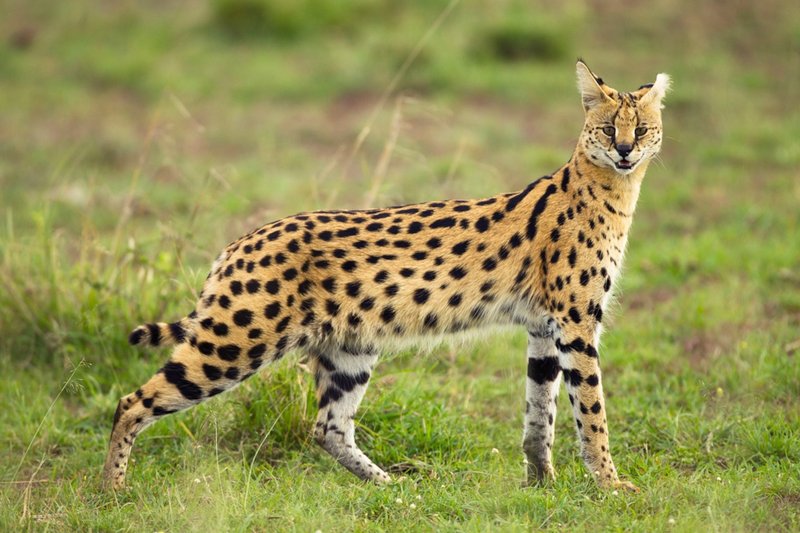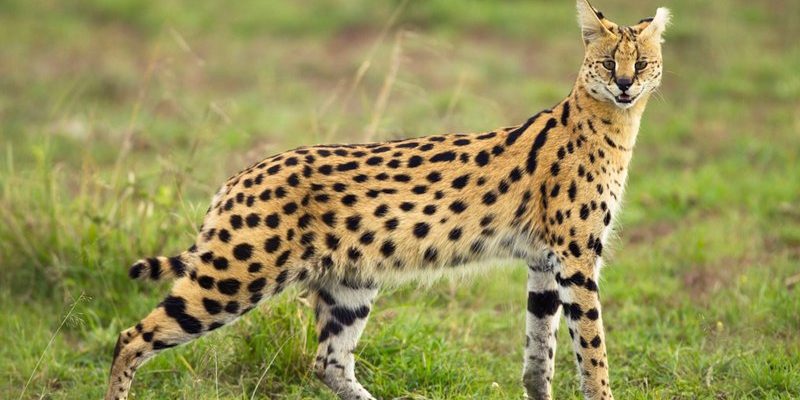
Encountering a serval can feel like stepping into a wildlife documentary. Online videos and nature shows might have made these cats look approachable, but they are still wild animals. Each encounter can be a mix of thrill and uncertainty. So, let’s take a closer look at what you should do if you find yourself face-to-face with a serval.
Understand the Serval’s Behavior
Before anything else, it’s crucial to understand how servals behave. These sleek cats are known for their agility and hunting prowess. They primarily feast on rodents and birds, using their keen hearing to locate prey, even under the cover of long grass. Servals are generally solitary creatures, which means they prefer to be alone, except during mating season or when mothers are raising their kittens.
Now, here’s the thing: servals are not naturally aggressive. Most of the time, they’ll be more frightened of you than you are of them. These cats tend to avoid human contact. However, if a serval feels threatened or cornered, it might react defensively. Knowing this can help you stay calm and collected during your encounter.
Stay Calm and Observe
If you come across a serval, your first instinct might be to take a photo or get closer for a better view. Hold on a second! Staying calm is key. Take a moment to slow down and breathe. The last thing you want is to startle the animal or make sudden movements.
Stand still and observe from a distance. This is your chance to watch this fascinating creature in its natural habitat. You might notice its unique hunting stance, with its ears perked up and its body poised. These little details can enhance your appreciation of the serval and make for some great memories—without putting you at risk.
Maintain a Safe Distance
You might be tempted to get closer for a photo, but remember that servals are still wild animals. Keeping your distance is crucial for both your safety and the cat’s well-being. Ideally, you should stay at least 100 yards away. This gives the serval space to feel safe while allowing you to enjoy the sight.
If you’re using binoculars or a zoom lens, now’s the time to whip them out. This way, you can get a closer look without invading the serval’s space. Avoid making loud noises or sudden movements that may scare the animal. If the serval starts to walk away, let it go. It’s best to let it wander off peacefully.
Do Not Approach or Feed the Serval
One of the biggest no-nos when encountering wildlife is attempting to approach or feed them. While it might seem harmless to throw a snack its way, this can create problems. For starters, feeding wild animals can change their natural behavior, making them less afraid of humans. This might lead to dangerous encounters in the future—not just for you, but for other people too.
Instead of trying to interact, think about how to respect the animal’s space. Standing quietly and enjoying the moment is a beautiful way to connect with nature. It also ensures that servals and other wildlife continue to thrive in their natural habitats.
Know When to Leave the Area
After a while, you might notice the serval moving away or becoming less active. If the cat seems uninterested in you, it’s a good sign that it’s time to start thinking about heading out. If the serval begins to show signs of distress, like pacing or watching you closely, it’s essential to leave the area quietly.
Make your exit calmly and quietly. Don’t back away too quickly or turn your back on the animal. Instead, sidestep slowly while keeping an eye on it. This helps you exit gracefully without causing unnecessary panic.
Report Your Sighting
If you’re in a park or protected area, consider reporting your sighting to park rangers or wildlife officials. Sharing your encounter can help them monitor the health of the serval population and provide valuable data for conservation efforts. Plus, it’s always exciting to share the thrill of spotting such a magnificent creature!
When you report your sighting, be ready to provide details like the time, location, and behavior of the serval. This information can be helpful for researchers and wildlife enthusiasts alike.
Respect Wildlife Conservation Efforts
Understanding how important it is to protect servals and their habitats can enhance your appreciation for these animals. Servals play a key role in their ecosystems, helping control rodent populations. Unfortunately, they face threats like habitat loss and poaching.
As a visitor in their home, doing your part to respect and promote wildlife conservation is vital. Follow guidelines laid out by parks and wildlife organizations, and educate others about the importance of protecting these beautiful creatures. Simple actions, like not littering or staying on designated trails, can make a big difference.
Final Thoughts on Your Serval Encounter
Encountering a serval can be a memorable and thrilling experience. By understanding their behavior, respecting their space, and knowing how to react appropriately, you can ensure both your safety and the well-being of the animal. Remember, the goal is to appreciate the beauty of these wild cats while allowing them to live freely and thrive in their natural habitat.
So next time you’re out in the wild and spot a serval, take a deep breath, stay calm, and enjoy the moment! Wildlife encounters remind us of the incredible diversity of life on our planet, and how important it is to protect it. Happy exploring!

